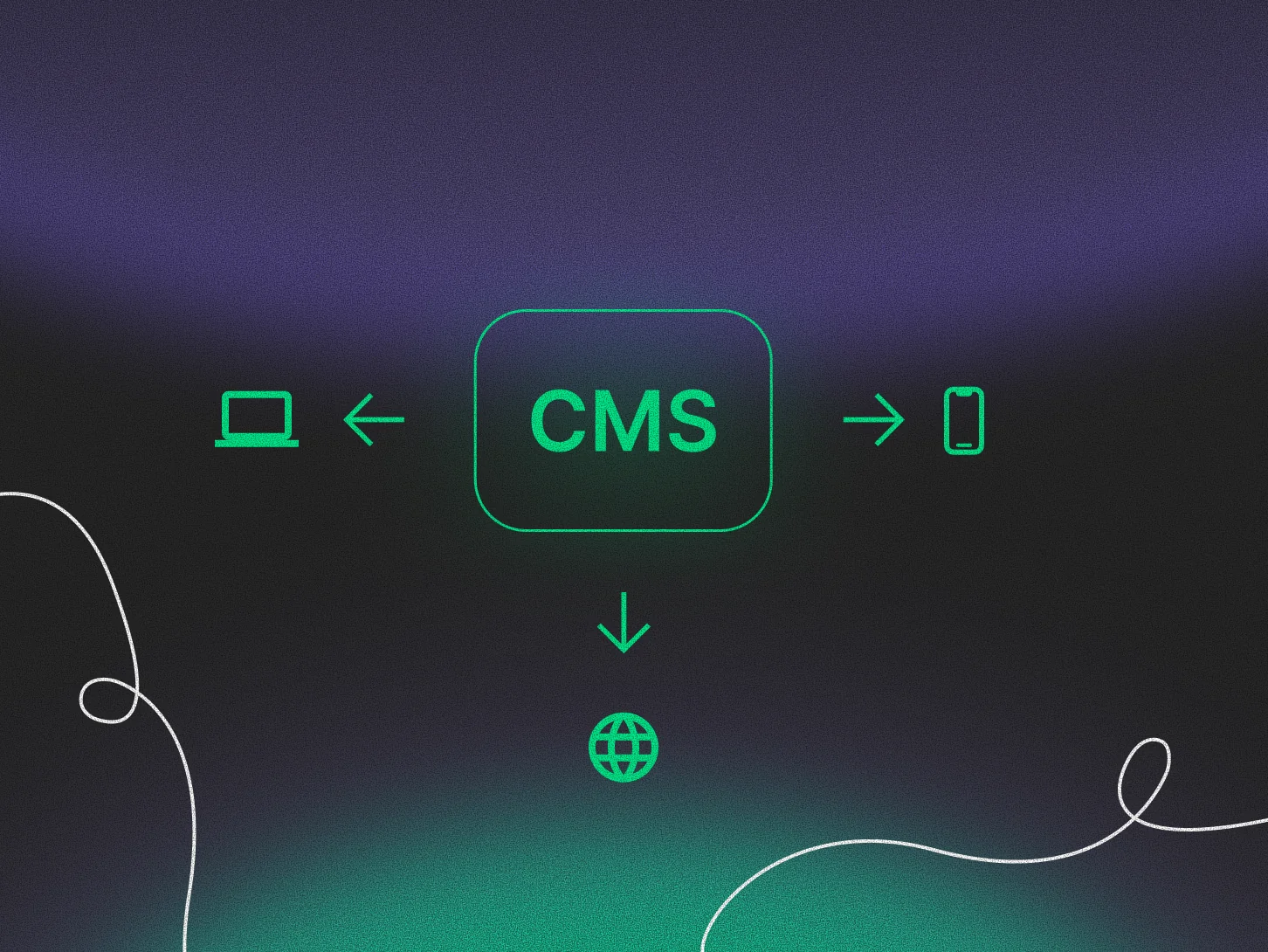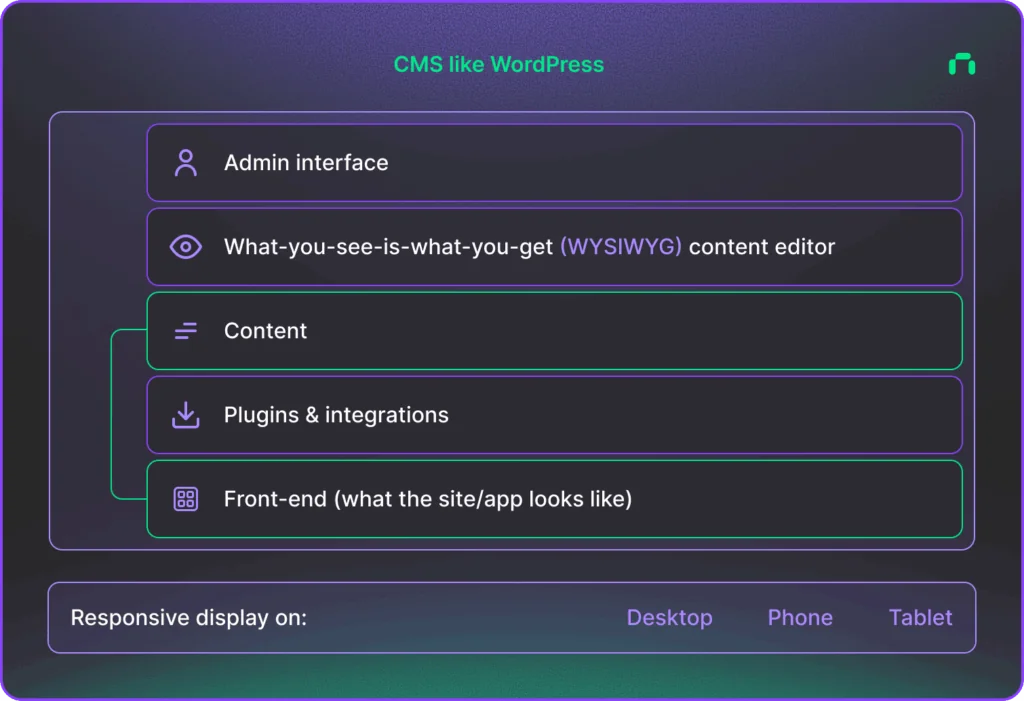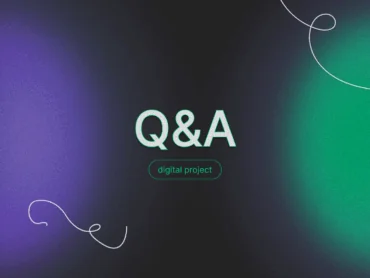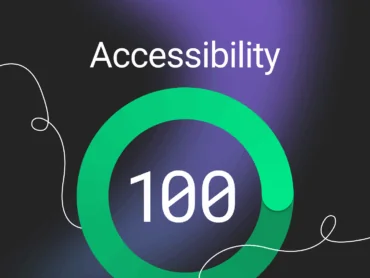Headless CMS – how it works & when it makes sense for business

Headless CMS is an alternative to traditional content management systems like WordPress. It has also become a trend, which is why many businesses and website owners are considering moving their services to a headless solution. In this article, we break down what a headless CMS really is, its pros and cons, and when it makes the most sense to use it for a business website.
What is a headless CMS?
A headless CMS is a type of content management system that separates the content creation and storage (backend) from the content presentation (frontend). Content managed in a headless CMS can be delivered via APIs (usually REST or GraphQL) to any frontend or device: a website, mobile app, IoT devices. A company using a headless CMS solution manages the content in one place and then may display it anywhere independently from how it is created or stored.
How does it work – in simple words?
Content creation (the body) and content presentation (the head) get separated. That’s a symbolic, yet very vivid, image that explains the concept. But what does that mean in practice?
Content creators (e.g. marketers, journalists) edit the content in the CMS, but they don’t edit the way the content is presented to the end-user. The front-end part – in other words, what the user actually sees on their screen – is taken care of at a completely different place, usually an app or website implemented in a chosen technology, language, or framework. Imagine you add blog posts or page content in WordPress, but you don’t use WordPress to edit the layouts, content blocks, site structure, etc.
The headless approach lets content be reused and displayed in many places quickly and consistently.


When to use a headless CMS over traditional one
For businesses that need to deliver content via multiple channels (website, app, IoT), require extraordinary flexibility, scalability or performance headless solutions may be a reasonable choice over a traditional CMS.
There’s no way to objectively state, though, that headless will always be better than WordPress – because, in many cases, it won’t be. A lot depends on the characteristics of the business, its scale and growth roadmap, the type and volume of the content it publishes, and the team that works on implementing and maintaining the web service.
There are some business use cases, though, where a headless CMS may make sense.
Omni-channel content delivery
When a company needs to distribute the same content across multiple platforms (website, mobile apps, social media, IoT devices) seamlessly and consistently, a headless CMS is ideal because it provides content via APIs to any touchpoint.
Custom frontend needs
Businesses wanting full control over the design and user experience, using modern frontend technologies like React or Vue, may benefit from a headless CMS as it lets developers build custom frontends without template restrictions of WordPress. With headless, sky is the limit when it comes to the front-end technology choice and the ways the content may be displayed to the users.
Improved performance and SEO
By integrating a headless CMS with static site generation frameworks like Next.js or Gatsby, websites can achieve faster load times and strong SEO performance, since content is pre-rendered and served as static HTML. This often results in better visibility and user experience compared to a traditional WordPress setup that relies on dynamic rendering – unless WordPress is optimized with caching or a static approach.
Sites with high traffic, lots of content, or multi-channel delivery may benefit from using headless platforms, as they allow to scale frontend and backend separately. At the same time, though, for smaller websites or those without complex frontend needs, WordPress can deliver excellent performance with less development effort.
Higher security & scalability requirements
The separation of frontend from backend may also result in an increased level of web service security. Content managers working on a headless CMS will not have access to admin settings and frontend. This may be important for fast growing companies, companies working with external multiple content providers or those needing intensive content management without compromising security.
Advantages of headless CMS solutions
Great flexibility & customization options
As the headless CMS serves only as the backend for content management, it is not technically tied to any frontend solution – what happens on the frontend depends on developers and their free choice of technology. That opens practically unlimited customization possibilities for developers.
Scalability
High traffic websites and large projects may benefit from headless CMS. The separation of frontend and backend allows for scaling the content management and delivery process independently.
Security
Headless CMS solutions may be helpful in maintaining the highest security standards. As the frontend and backend layers are detached, and the vulnerabilities of themes and plugins are no longer a concern for the website owner.
Top-notch performance
The separation of content from display opens the way for using modern frontend frameworks dynamically loading the content. A well-coded web service using headless CMS will often score higher in site performance tests than a WordPress website using multiple plugins.
Challenges posed by headless CMS
Tech expertise – required
As opposed to websites based on WordPress, digital products using headless CMS require web developers to take care of the front-end. Traditional CMS, though limited in terms of flexibility, may be a better solution if you have a small team, a small website to handle. If there’s no business justification for separating the content management from the presentation part, a well-structured and professionally implemented WordPress site or app will do the work for you.
Higher implementation costs
Choosing a headless CMS often means facing higher upfront costs, primarily because building and maintaining custom frontends and managing API integrations require skilled developers. This initial investment may be followed by additional expenses including necessary third-party services for hosting, security, and performance optimization.
When evaluating options, it’s essential to consider the total cost of ownership over time. While a headless solution may demand a larger initial investment, its superior scalability and flexibility can prevent bottlenecks and reduce maintenance expenses as your business grows. In other words, investing more at the start can lead to long-term savings and smoother expansion, making it a worthwhile choice for many enterprises.
Lack of content preview
Within a headless CMS, editors usually cannot see how content will appear on the frontend in the process of content creation. Those who got used to WordPress’s WYSIWYG system may find it a significant drawback, especially because it may slow down the content production process and lead to multiple revisions.
What are the popular headless CMS commercial solutions?
Popular enterprise options include Contentful, Strapi, Sanity, Storyblok, and Kontent.ai. However, the need for a headless solution doesn’t necessarily rule out WordPress.
Can WordPress serve as the content hub for headless solutions?
In fact, WordPress can be used as the backend for a headless solution. In this setup, WordPress acts purely as a content management system to create, manage, and store content, but it does not handle how the content is displayed to the users.
Instead, WordPress delivers content via its REST API (or GraphQL with plugins) to any frontend technology or platform – such as websites built with React, Vue, or Next.js, mobile apps, or IoT.
This approach is called “Headless WordPress” and it may be suitable for projects that want to keep WordPress’s content management ease but require custom, flexible, and multi-platform frontend experiences beyond what WordPress themes offer.
It may be a valid option, especially in case of a transition to a headless solution from a website previously based fully on WordPress. On the backend part, the website editors may feel more comfortable working in a system they have experience with. And at the same time, the business gets more flexibility when it comes to technology choice, multiple channel content display and readiness for fast growth.
When WordPress is just enough and there’s no need for headless?
For large, high-traffic, and multichannel projects where performance and precise SEO optimization matter, headless CMS often outperforms WordPress. But for smaller or content-focused sites where ease of use and quick deployment matter, a well-optimized solution based entirely on WordPress can perform just as well.
If your business:
- prioritizes time-to-market that requires rapid site setup,
- primarily focuses on a website without the need of omni-channel content delivery,
- can be handled by WordPress themes in terms of aesthetics,
- hires non-technical content creators or teams without dedicated developers to manage the site,
then investing in headless CMS may seem like an unjustified business decision. The key is to match the technology to the actual business needs and setup.
Final words
While headless CMS offers flexibility, speed, and scalability benefits, it requires more development effort, resources, and technical expertise. It’s all about finding the balance between the technical possibilities and the business needs. Choosing a headless platform over WordPress or another classic CMS solution should be always a business-centered decision, and not a hasty reaction to a trend.
If you’re considering migrating your web service to a headless platform, or are still before implementing your first business website, feel free to contact us for guidance.
At Ambiscale, we’ve delivered both traditional WordPress websites and headless solutions for our clients, and each time we’ve helped them make a decision on what’s best for their business – not only in terms of optimal implementation, but also scalability, long-term usability and lower total cost of ownership.


